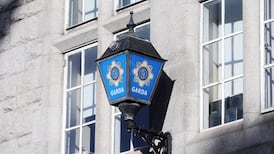SOLOMON ISLANDS:A powerful earthquake and tsunami struck the tiny Solomon Islands yesterday, swallowing entire villages and killing at least 12 people with many more missing.
The shallow quake, with a magnitude of at least 8.0, levelled buildings and damaged a hospital on Gizo island northwest of the Solomons capital, Honiara. A tsunami that witnesses described as the height of a two-storey building sucked homes into the sea as thousands of panicked residents fled for higher ground.
At least seven people died in Gizo, many trapped in their homes when waves swept through the town. Other bodies could be seen but not reached because of huge waves crashing ashore, the government said in a statement.
"The wave was up to 10m (32 feet) high in some villages," Solomon Islands' chief government spokesman Alfred Maesulia said. "Some villages have been entirely washed away." The quake struck 350km (220 miles) northwest of Honiara during the morning (2040 GMT on Sunday) and sparked a tsunami alert around the Pacific.
Beaches along Australia's east coast were closed and ferry services halted in Sydney Harbour amid fears of a repeat of the 2004 Indian Ocean earthquake and tsunami disaster. Roads in Australia's north were gridlocked as residents fled the coast.
The alert was lifted about nine hours later, with damage confined to the immediate area around the quake.
Solomons prime minister Manasseh Sogavare said the disaster could have been worse if it had happened only a few hours earlier, in darkness, when more people would have been asleep.
"My heart goes out to all of you in this very trying time," he said in a national radio address.
Government and Red Cross disaster teams are taking tents, food and water to the area, Mr Sogavare said. Australia, which said the wave also hit the western Papua New Guinea island of Bougainville, has offered €1.2 million in aid.
"The water just came up about probably about four to five metres above sea level and kind of just went up into the communities and doused everything," Danny Kennedy, a dive shop owner and provincial politician on Gizo, said.
Jackson Kiloe, the premier of Choiseul, said huge rolling waves were crashing ashore, prompting more evacuations. "The huge wave rolls are stronger than floods," he said.
Solomons' disaster management authorities said two-way radio communications problems were preventing an assessment of damage on Simbo island where residents reported waves hitting houses 200m inland.
Geological agencies, including those in Australia and Japan, put the magnitude of the quake at 8.1 while the US Geological Survey revised its earlier estimate to 8.0.
The initial tremor was followed around seven minutes later by a second one, centred further west, of magnitude 6.7.
Gary Gibson, who chairs the International Seismological Centre executive committee, said the quake was the biggest to hit the Solomons since 1900.
"An earthquake of this size would involve a rupture of more than 10,000sq km of fault area . . . about 100km by 100km," he said.
But he said the quake was much smaller than the 1,300-km long rupture in December 2004 off Indonesia's Sumatra island.
Kevin McCue, the director of the Australian Seismological Centre, said there was a strong chance more quakes would follow in coming days on an undersea trench west of the Solomons.
"This region typically has double earthquakes, six sets of them since 1907," he said, adding residents and rescue teams should be on alert for more quakes of up to magnitude 7.5.
The Solomon Islands lies on the so-called Pacific "Ring of Fire" where volcanic activity and earthquakes are fairly common. Most homes in the islands are constructed of timber and bamboo.
- (Reuters)







